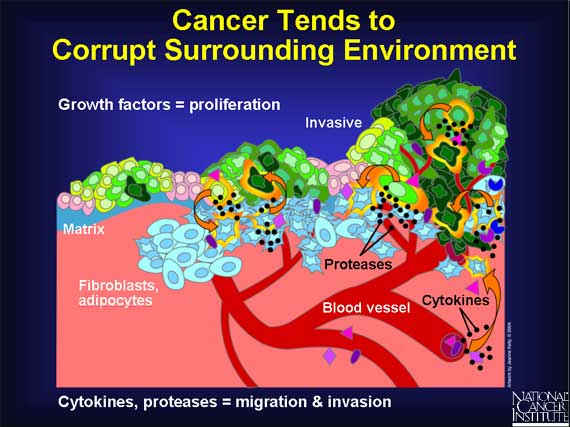|
In addition to all the molecular changes that occur within a cancer cell, the
environment around the tumor changes dramatically as well. The cancer cell
loses receptors that would normally respond to neighboring cells that call for
growth to stop. Instead, tumors amplify their own supply of growth signals.
They also flood their neighbors with other signals called cytokines and enzymes
called proteases. This action destroys both the basement membrane and
surrounding matrix, which lies between the tumor and its path to metastasis--a
blood vessel or duct of the lymphatic system.

< Previous | Index | Next Slide > |